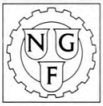Related Research Articles

The Norwegian Confederation of Trade Unions is a national trade union center, decidedly the largest and probably the most influential umbrella organization of labour unions in Norway. The 21 national unions affiliated to the LO have almost 1,000,000 members of a Norwegian population of 5 million. The majority of affiliated unions organizes traditional blue collar workers, but the largest affiliate is the Norwegian Union of Municipal and General Employees which makes up more than a third of all members. LO is affiliated to the ITUC and the ETUC.

The Swedish Trade Union Confederation, commonly referred to as LO, is a national trade union centre, an umbrella organisation for fourteen Swedish trade unions that organise mainly "blue-collar" workers. The Confederation, which gathers around 1.5 million employees out of Sweden's 10 million people population, was founded in 1898 by blue-collar unions on the initiative of the 1897 Scandinavian Labour Congress and the Swedish Social Democratic Party, which almost exclusively was made up by trade unions. In 2019 union density of Swedish blue-collar workers was 60%, a decline by seventeen percentage points since 2006 when blue-collar union density was 77%. A strong contributing factor was the considerably raised fees to union unemployment funds in January 2007 made by the new centre-right government.
The Danish General Workers' Union was a general union representing mostly unskilled and semi-skilled workers, in Denmark.

HK Denmark, is a Danish trade union representing clerical workers, workers in retail, and in related industries.
International Photo-Engravers' Union of North America (IPEU) was a labor union formed in 1904 to represent halftone photoengravers in the printing industry. Its successor union is the International Brotherhood of Teamsters, Change to Win Federation.
The Congreso Obrero de Filipinas was a trade union federation in the Philippines, established in 1913 and dissolving into a paper organization which vanished towards the end of the 1930s. The COF was considered the second labor federation in the history of Manila's labor movement.

The Norwegian Graphical Union was a trade union representing workers in the printing industry and related trades, in Norway.

The International Graphical Federation (IGF) was a global union federation bringing together unions of printing workers around the world.
The International Federation of Bookbinders and Kindred Trades was a global union federation representing unions of bookbinders.
The Graphics Federation was a trade union representing workers in the graphics and printing industries in Denmark.
The Danish EL-Federation is a trade union representing electricians and technicians in Denmark.
The Danish Textile Workers' Union was a trade union representing workers in the textile industry in Denmark.
The Danish Typographical Union was a trade union representing typographers in Denmark.
The Danish Seamen's Union was a trade union representing sailors and other workers ships in the Danish merchant navy.
The Danish Lithographers' Union was a trade union representing printers in Denmark.
Trade unions in Norway first emerged with the efforts of Marcus Thrane and the formation of the Drammen Labour Union in 1848 which organised agricultural workers and crofters. However, with Thrane's imprisonment and the suppression of the union in 1855, it was not until 1872 before a union was founded again, by print workers. In 1899 the first national federation, the LO, was founded. During this period interactions with trade unions in Denmark and Sweden played a great influence over the development of trade unions in Norway.
The Danish Hairdressers' and Beauticians' Union was a trade union representing workers in the beauty industry in Denmark.
The Danish Brewery, Distillery and Mineral Water Workers' Union was a trade union representing workers in the beverage industry in Denmark.
The Swedish Lithographic Union was a trade union representing lithographic printers in Sweden.
The International Brotherhood of Bookbinders (IBB) was a labor union representing bookbinding workers in the United States and Canada.
References
- ↑ "Dansk Bogbinder- og Kartonnagearbejder Forbund, Aarhus-afdeling (1891-1993)". Aarhus Arkivet. Retrieved 10 November 2020.
- ↑ The American Labor Yearbook. New York: Rand School of Social Science. 1924. p. 254.
- ↑ Directory of Labor Organizations: Europe. Vol. 1. United States Department of Labor. 1955. pp. 7.5–7.22.
- ↑ "Man kan ikke være venner med alle". Arbejdermuseet. Retrieved 13 February 2020.
- ↑ Ebbinghaus, Bernhard; Visser, Jelle (2000). Trade Unions in Western Europe Since 1945. Basingstoke: Palgrave Macmillan. p. 178. ISBN 0333771125.